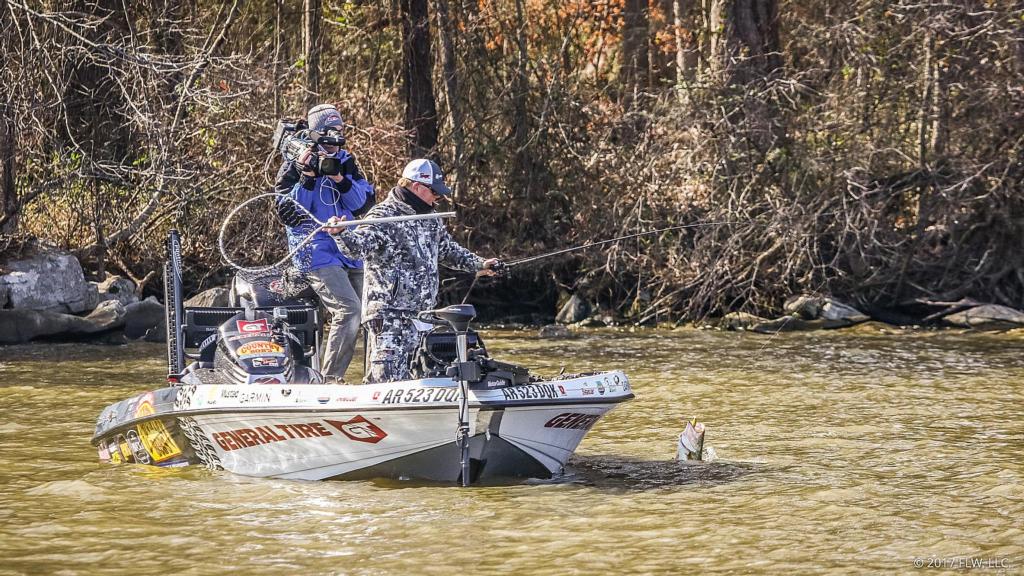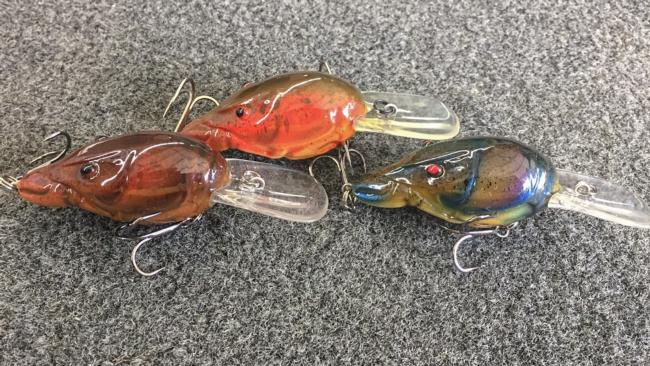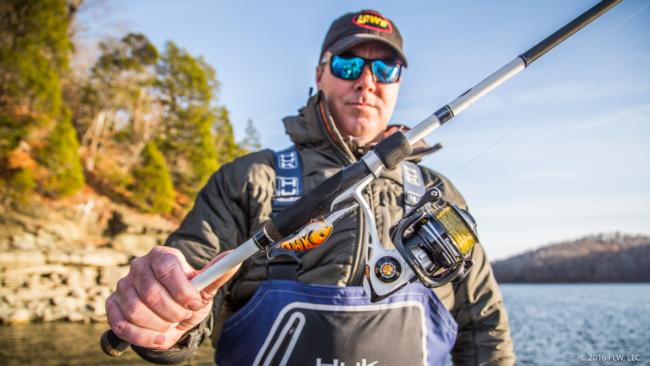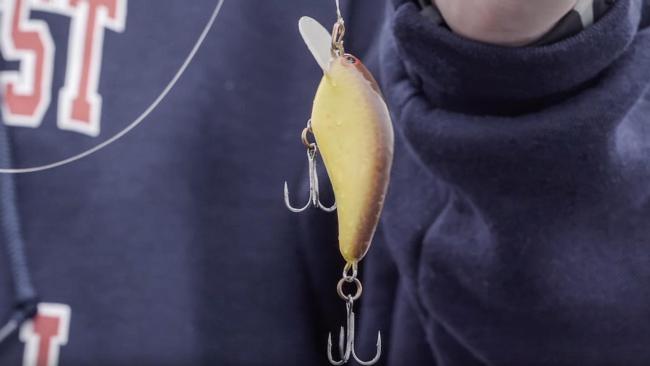Three Spring Crankbait Patterns to Try
Now’s the time to break out the cranking stuff

There’s not a better time of year than spring to start throwing a crankbait. As bass move up into the shallows from their winter haunts, many put on the feedbag before beginning their yearly spawning chores. From Vermont to Tennessee, some of the best cranking action, for both size and numbers, can be had in the spring. As such, we called upon a few of the FLW Tour’s best crankbait specialists to provide a look at a few of the patterns they’re fishing this time of year.
Jeremy Lawyer – Ozark smallmouths
If you live and fish anywhere in the Ozarks, it almost guarantees that you’ll be part of the spring cranking tradition there.
“For me the time to throw a crankbait is right now,” says Jeremy Lawyer. “I’m lucky enough to live on Table Rock and the first wave of fish that get up there a lot of years are smallmouths. If you want to catch spots and blacks [largemouths] you’ll target some of the deeper stuff, and if you want to target the smallmouths you get on the flat gravel. When a fish is up on that gravel it’s there to eat, and that’s something a lot of guys overlook.”
Lawyer says that cranking flat, main-lake gravel points and pockets can be a veritable bronzeback mine in the early spring. He likes a bank or point that’s fairly flat – the kind of place where a long cast from the shore might not splash down in water that’s 10 feet deep. He usually starts on the points, but likes to fish all the way into the short main-lake pockets, especially in the afternoons. He targets any laydowns or cedar trees in the water, but is happy to simply crank gravel as well. Regardless of the exact location, the number one key is the wind – if there isn’t at least a little chop beating the bank, you might as well give up on the crankbait, advises Lawyer.
Throwing 8- or 10-pound-test and a medium-speed reel, he likes a LIVETARGET HFC Crawfish crank.
“It’s got a great hunting action right out of the package, like what some of the best Warts used to do back in the day,” says Lawyer. “I do have Fall Creek Lures custom-paint about all of mine, just to get some colors that everyone else isn’t throwing and the fish don’t see all the time.
“It’s amazing what you can do with just a green crawfish bait. Sometimes they are eating it okay and then you put one on with an orange belly instead of a white belly and all of a sudden they start getting the bait down in their crushers.”
Lawyer likes a medium-fast retrieve has calls “walking.” Though he says that a super slow and steady crawl is popular, giving it a little more speed is usually better.
“The trick to fishing it is kind of dragging it like you would a Carolina rig,” describes Lawyer. “You don’t really stop the bait, but you don’t simply wind it. We call it “walking.” A lot of times those last two or three wiggles on a drag before you start again are when they want to eat it.”
Brad Knight – Highland lakes in Tennessee
Brad Knight got his start fishing lakes such as Watts Bar and Norris in east Tennessee and is one of the best at the cranking game. Knight says that anytime you get on a lake that isn’t primarily centered around grass, a crankbait is a killer in the spring.
“You’ve got two deals in the spring,” says Knight. “One is when they are coming up off the Alabama rig bite and from deeper water. Those are the steeper banks – 45-degree (incline) stuff. After that they move up to the flatter stuff. As they transition farther into the backs and into the spawning pockets I target those flatter banks and the points.”
Early in the spring, with the water in the low 50s, Knight sticks to the main lake and the front halves of coves and creeks. He says he’s mostly looking for rock, and his fishing isn’t too different from how he cranks in December on lakes such as Dale Hollow. Later in the spring, before the bass go on beds, when the water is in the upper 50s, Knight targets flat points and banks near the mouths of spawning pockets. It’s then that he especially likes mud or clay banks with laydowns or rocks interspersed on them. He says that as the bass move up, they’ll gang up on the little structure incongruities.
“One of the best shallow cranking bites I ever got on was in the prespawn – I think it was on Norris [Lake],” says Knight. “It got really warm, and the fish got on little rock veins on mud banks. They were moving up so fast that by the time you got down one bank you could turn around and go down the same bank and catch them off the same spots again.”
Early in the spring, Knight says he prefers a Strike King 3XD. Later, as he fishes shallower and hits more wood, Knight likes either a Strike King 1.5 or 2.5 Square Bill.
Knight has a fairly straightforward color selection system, but he ends up throwing less red in the spring than most bass fishermen because of his choices for muddy water.
“I watch the water and light,” says Knight of his color choices. “If it’s fairly clear with lowlight conditions I’m going to go with a spring craw; if it’s dirtier I like whiter baits, and if it’s brighter and clear water I like the green gizzard shad color or something more translucent.”
Mark Rose – The flat-side bite
Pretty much every pattern Mark Rose gets on these days is tournament-winning and one of his favorites was key to his win on Guntersville in the FLW Tour season opener. In the spring, when the water is still pretty cold, Rose likes to break out a flat-sided crankbait and go to work.
At Guntersville Mark Rose used an old flat-sided square-bill made by Strike King’s custom lure shop. It’s no longer available, but it’s really just a slightly larger and heavier version of the many flat-sided balsa baits currently available.
“When the crawdads just start to creep out, that flat sided crankbait is really good,” says Rose. “Anywhere the water is from about 49 to 56 degrees it will work. I’ve caught ’em on it in warmer water, but there’s something about that flat-sided crankbait when the water is pretty cool that is deadly.”
Though rock transitions and chunk rock banks are good targets, Rose says that the subtle little crankbait is good for more than just the hard stuff.
“It’s not necessarily just rock,” details Rose. “I caught some fish in the Guntersville tournament on inside grass lines. Riprap is what everybody saw, but I caught four big fish on a flat-sided crankbait on the inside grass lines. It had a hard bottom, but it’s more about the conditions than anything. You can throw it around grass, or boat docks or anything with the right conditions.”
One condition that Rose always wants to see is some color in the water. For him, the spring flat-side bite is not a player in extremely clear water. Perhaps that’s why he is drawn to slightly heavier tackle – the “small crankbait” model of the Mark Rose Ledge Series of Lew’s Custom Pro Speed Stick rods and 12-pound-test Seaguar Tatsu.
“I know a lot of people back east fish those kinds of baits on a spinning rod, but find I can do it a little better with a baitcaster and 12-pound line,” says Rose. “Some of the reason guys use a spinning rod is because they throw smaller flat-side baits or a wider array, and when I throw anything smaller than usual I do use a spinning rod. But most of the time I can get by with a baitcaster just fine.”
For colors, his usual go-to patterns are spring craw or brown and chartreuse in stained water. For a very light stain, Rose says he’ll go with just a regular shad or Tennessee shad pattern.
FLW Tour pro or not, if you fish for bass, you probably should throw a crankbait before bedding season kicks in where you fish. Doing so likely will convince you that crankbaits always need to be part of your springtime game plan.


